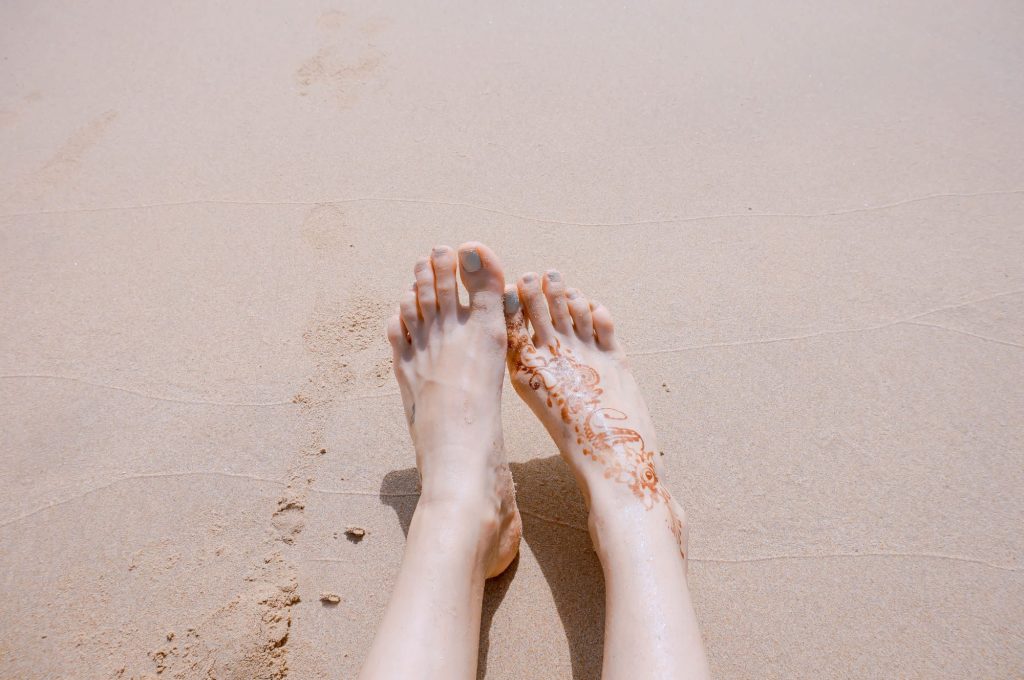
- POPSUGAR Australia
- Beauty
- 7 Things You Never Knew About Detecting Skin Cancer
7 Things You Never Knew About Detecting Skin Cancer

Skin cancer is certainly not the most thrilling beauty topic, but it’s unquestionably one of the most important – no matter what time of year it is. Even if you haven’t been on a beach in months, there are some areas of our skin that are exposed to the harmful UV radiation on a regular basis, which means that we’re pretty much at risk all the time.
While all of this sounds utterly depressing, the good news is that most skin cancers can be treated or removed if detected early. There are, however, certain types that are caused by factors other than UV exposure – such as genetics or environmental influences. It can also develop on parts of the body rarely exposed to the sun. If you thought you knew everything there is to know about skin cancer, hear what two derms, who are both well-versed on the topic, have to say – and more importantly how to protect yourself.
When it comes skin and sun safety, there’s no such thing as knowing too much.
Know When To Cover Up
Clothing is the most effective form of sun protection, so whenever possible cover up with long sleeve shirts and pants, and wear broad-brimmed hats and UV-blocking sunglasses. Whenever possible, seek shade when the sun’s rays are strongest, which is typically between 10 a.m. and 4 p.m.
Numbers Make All The Difference
Of course the basic act of applying sunscreen daily is crucial to skin cancer prevention – but the amount, frequency and SPF level used is equally as important. Apply sunscreen every morning, using a broad-spectrum product with an SPF 15 or higher.
Switch to a water-resistant, SPF 30 or higher when you’re planning to spend extended time outdoors. Apply at least one ounce of sunscreen to your exposed skin 30 minutes before going outside. And then be sure to reapply every two hours or immediately after swimming or sweating.
Take Sunburn Seriously
“On average, a person’s risk for melanoma doubles if he or she has had more than five sunburns,” says Julie Karen, MD, a New York dermatologist and spokesperson for The Skin Cancer Foundation. While the sun may feel glorious against your skin, getting burned is literally like playing with fire.
“Sometimes the skin can’t repair the DNA damage caused by UV radiation, which triggers mutations, or genetic defects, that lead the skin cells to multiply rapidly and form malignant tumors – skin cancers,” Dr. Karen further explains.
Skin Cancer Comes in All Shapes and Sizes
Skin cancer can take many different forms and can develop on literally any part of the body – not just where the sun hits.
If you’re unsure what a potential skin cancer looks like, here’s a quick guide:
- Basal cell carcinomas often look like open sores, red patches, pink growths, shiny bumps or scars.
- Squamous cell carcinomas can also look like open sores, or scaly red patches, elevated growths with a central depression, or warts.
- Melanomas can appear in a variety of colors – black, brown, skin-colored, pink, red, purple, blue or white. Among melanomas, two subtypes are most commonly diagnosed after delay – amelanotic and desmoplastic. These melanomas are less commonly brown or black and more commonly pink, red or flesh colored.
Of course if you’re unsure, have a derm take a look.
Sunscreen Helps A Lot . . . Really.
“About 90 percent of non-melanoma skin cancers and about 86 percent of melanomas are associated with exposure to UV radiation from the sun,” says Dr. Karen.
That’s a huge number! What’s also huge is how low those number go with daily (and proper) use of an SPF 30 or higher. Our skin can only protect itself to a certain degree and we can’t count on the melanin in our skin to do all of the work.
“Melanin as a sun protection factor agent (SPF) is effective in quenching the sun rays by 13 in African Americans and 5 In Caucasians,” explains dermatologist Maritza I. Perez, MD.
Scan Thoroughly
There are several areas that often go unchecked, but are prone to sunburn, like the scalp and hairline, ears, feet, hands, fingernails, and eyelids. These are also areas that aren’t always covered or protected.
“I’ve diagnosed skin cancers on the scalp, between toes, in the genital region and on the palms of the hands,” says Dr. Karen. To be safe, regularly do a head-to-toe check, beyond the sun-exposed parts of your body.
“Everyone should be performing self-skin exam every day including hands, feet and genitalia,” says Dr. Perez. Both Dr. Karen and Dr. Perez recommend seeing a Board Certified Dermatologist at least once a year, and twice if you’ve ever have had a skin cancer.
Be Careful of Cuts
“People might dismiss an open sore that won’t heal or continues to scab over, which are warning signs of skin cancer, says Dr. Karen. The majority of skin cancers are new lesions. Therefore, any new lesion that stands out as distinct from all other lesions should be brought to medical attention immediately. Dr. Karen also warns that pre-existing moles, even longstanding ones can also change and become malignant.
“I caution patients that any change in an existing mole or freckle is cause for concern. If you notice that a mole on your skin has changed shape, color or size, or has become symptomatic (itching, scabbing crusting), make an appointment with a dermatologist right away,” she notes.








